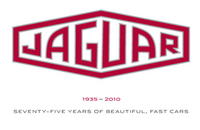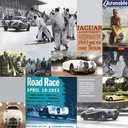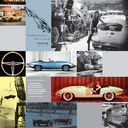Celebrating 75 Years of Jaguar - VIDEO ENHANCED
 |
 |
LONDON - September 16, 2010: Whilst we have been enjoying the anniversary of Jaguar all year round with various events, the 23rd of September marks the actual day of their 75 years as an integral part of British heritage. To celebrate this a group of 75 individually-numbered, iconic Jaguars from across the years will make a two-day journey, starting from Coventry tomorrow and ending at Goodwood on the 18th, stopping in at London?s May Fair hotel on the way ? the site of the original Jaguar model launch in 1935.
 |
Most cars will be privately-owned examples, driven by their owners, joined by some of the most famous cars from Jaguar?s own heritage collection, including the E-Type, C-Type, pre-war SS Jaguar saloons and a selection of its latest models.
Launched to coincide with the drive, an iPhone and iPad app charting the 75 years of the British marque?s history is available to download now by searching 'Jaguar 75' in iTunes.
This 'Jaguar 75' app pulls together a host of materials that tell the company?s story of making beautiful fast cars over the past 75 years through the people and machines that have made it a British motoring icon, including the SS 2.5-litre Saloon, XK120, C-Type, D-Type, XKSS, MKII, E-Type, XJ13, XJ6, XJ-S, XJR-9, XJ220, XK8, XK, XF and XJ.
Favourite top facts include:
1) When the first ever Jaguar was revealed, Sir William Lyons (founder of
Jaguar Cars) asked guests of the launch event to speculate on how much the
SS Jaguar 2.5 Litre Saloon would cost. The average guess was £632. In
fact, the handsome, luxurious machine cost a mere £385.
2) For the 1938 British Motor Show, Lyons penned a coupé version of the
SS100. With beautiful sweeping curves and Art Deco detailing it proved a
sensation but sadly, with the outbreak of war the following year, the show
car was the only one ever built.
3) At Le Mans in 1953 Jaguar C-Types finished 1st, 2nd and 4th. The
company sent a telegram to the Queen, dedicating its win to her, in her
coronation year, and received a congratulatory reply from Her Majesty.
4) Of the 16 XKSS vehicles produced, one was bought by actor and racing
driver Steve McQueen, who kept it for 10 years before selling it on. Of
all his cars it was possibly the one he enjoyed a little too much for it
netted him two driving bans. However, clearly regretting his decision,
McQueen later bought the car back and owned it until his death.
5) Enzo Ferrari proclaimed the E-Type to be "the most beautiful car ever
built" on first sight of it, while America's Road & Track magazine
reported it as, in the unreconstructed language of the era, "the greatest
crumpet collector known to man."
6) The XJ220 was developed by an informal group of Jaguar employees known
as the 'Saturday Club' who, as the name suggests, dedicated their spare
time to special projects.
7) Lyons' daughter, Pat, was the co-driver of 'NUB 120' the most famous
competition XK120. Her husband Ian Appleyard drove it to three Alpine Cup
victories and two RAC Rally wins.
8) The introduction of disc brakes was thanks to Jaguar. They were first
fitted to the C-Type raced by Stirling Moss and Norman Dewis in the 1952
Mille Miglia. Italian race officials were mystified by the new technology
and demanded a demonstration to prove it was in fact a brake and not some
illegal addition.
9) In his teens, Ian Callum, Jaguar's current Design Director, wrote to
Bill Heynes (then Chief Engineer) enclosing some of his own designs for a
Jaguar. Heynes kindly replied, suggesting to Callum that to pursue his
chosen career, he should learn engineering draughtsmanship and study
industrial design.
10) The fastest ever Jaguar was a slightly modified production XFR that
achieved 225.675mph at the Bonneville Salt flats in November 2009.
The app also includes images and information on:
• Jaguar's locations past and present: Foleshill, Castle Bromwich, Gaydon
and the Browns Lane Fire of 1957
• The men behind the machines:
Sir William Lyons (founder of Jaguar Cars)
Malcolm Sayer (designer of the C-Type, D-Type and E-Type)
Norman Dewis (chief development test engineer in the 1950s and 60s)
Lofty England (C-Type programme manager)
William Heynes (Chief Engineer of the C-Type, D-Type and E-Type)
Ian Callum (current Design Director of Jaguar)
Click PLAY to watch the Jaguar XJ75 unveiling at Pebble Beach


